
Moroccan Military Forum alias FAR-MAROC
Royal Moroccan Armed Forces Royal Moroccan Navy Royal Moroccan Air Forces Forces Armées Royales Forces Royales Air Marine Royale Marocaine
|
|
| | Armée canadienne/Canadian Armed Forces |  |
|
+35Vamtac RED BISHOP Fahed64 mbarki_49 mr.f-15 Eagle FAR SOLDIER Adam Shugan188 damix12 Fox-One Anassfra93 Magreb777 rmaf leadlord abidoudebji annabi PGM Inanç jonas Gémini augusta farewell jf16 godzavia lida thierrytigerfan GlaivedeSion FAMAS Yakuza rafi MAATAWI Seguleh I Proton Fremo Mr.Jad 39 participants | |
| Auteur | Message |
|---|
Yakouza
Invité
 | |   | |
| Auteur | Message |
|---|
MAATAWI
Modérateur

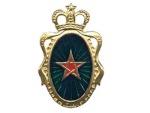
messages : 14756
Inscrit le : 07/09/2009
Localisation : Maroc
Nationalité : 
Médailles de mérite :
 
 
 
 |  Sujet: Re: Armée canadienne/Canadian Armed Forces Sujet: Re: Armée canadienne/Canadian Armed Forces  Mar 28 Juin 2011 - 15:42 Mar 28 Juin 2011 - 15:42 | |
| - Citation :
Defence Department buys presidential choppers for parts
The Defence Department has purchased nine U.S. presidential helicopters to be stripped down for spare parts for the Canadian air force's Cormorant search-and-rescue choppers.
The nine US101 helicopters as well as additional spare parts were purchased at a cost of around $164 million. That price includes shipping, handling, and engineering support.
The Obama administration had pulled the plug on the US101, also known as the VH-71, after the projected cost of the aircraft doubled from $6.5 billion to $13 billion U.S..
News reports indicate the U.S. government invested $3 billion into the helicopters, before the Pentagon decided to withdraw from the program.
"This package is considered an excellent one-time opportunity for the Department of National Defence and the Canadian Forces to address long-standing CH-149 Cormorant fleet availability issues related to the availability of spare parts," noted Defence Department spokeswoman Kim Tulipan.
The VH-71s and the Cormorants are similar variants of the AgustaWestland EH-101 helicopter so there are a number of common parts, she added.
An initial shipment of spare parts arrived in March. The remainder of the items will follow between now and September.
The availability of spare parts for the CH-149 Cormorant fleet, delivered to units starting in 2001 and 2002, remains an ongoing problem, military officers have said.
But AgustaWestland officials say the situation has significantly improved and the availability of the rescue aircraft has increased.
"Much effort has been placed on better forecasting of their spare parts needs, so that we can better supply parts ordered from us on a timely basis," the firm noted in a statement earlier this year. "Parts supply is a two-way street where we can only be reactive to the customer's requirements."
Jack Harris, the NDP defence critic, questioned why DND would not use some of the U.S. helicopter for search and rescue.
But according to DND, the nine airframes are not in flyable condition. They do not have valid airworthiness certificates nor are they configured for search-and-rescue missions, Tulipan noted.
When Obama came to the presidency he balked at the high cost of the VH-71 helicopter program, which had been started under former president George W. Bush.
"The helicopter I have now seems perfectly adequate to me," Obama told a group of his supporters at the time. "I think it is an example of the procurement process gone amok, and we're going to have to fix it."
The president's helicopter is known as Marine One when he is flying on it.
In May 2009 the U.S. Defense Department axed the helicopter contract after the program fell years behind schedule and billions of dollars over budget. Much of the blame for the problems was put on the U.S. government, which continued to make changes in the program.
Canada originally bought 15 Cormorants but one has since crashed.
The Cormorant and its variant, the EH-101, have had a long history on Canada's defence scene. In 1993, newly elected prime minister Jean Chretien cancelled a $5-billion contract to purchase the EH-101. He said Canada couldn't afford the helicopters ordered by the Conservatives and his government paid a $500 million penalty to get out of the contract.
Five years later, the air force selected the Cormorant, largely the same helicopter as the EH-101, as their choice for a new search-and-rescue helicopter.
But several years ago, a Canadian military team determined that because of limited availability of the Cormorants, 18 of the helicopters were needed for the air force to perform the search-and-rescue role once handled by a smaller number of 40-year-old Labrador choppers.
The Labradors were phased out of service in 2004.
"There are a number of DND studies with which AgustaWestland concurs, that the size of the Cormorant fleet at 14 aircraft, is simply too small to operate to meet all the envisaged search-and-rescue and training needs, even with an optimal regular maintenance schedule," AgustaWestland noted in its statement.
Ottawa Citizen | |
|   | | jf16
General de Division


messages : 41614
Inscrit le : 20/10/2010
Localisation : france
Nationalité : 
Médailles de mérite :
 
 
 

 |  Sujet: Re: Armée canadienne/Canadian Armed Forces Sujet: Re: Armée canadienne/Canadian Armed Forces  Mar 2 Aoû 2011 - 21:32 Mar 2 Aoû 2011 - 21:32 | |
| - Citation :
-
La rouille attaque le sous-marin canadien NCSM Windsor
2 août 2011 – 15:32
Pour le moment, le sous-marin canadien NCSM Windsor, de la classe Victoria, a plus à craindre de la corrosion que d’une éventuelle torpille. En effet, selon une note d’information rédigée par le lieutenant-commandant Helga Budden, officier des services d’architecture navale de la marine canadienne, le bâtiment est en train de rouiller.
D’après l’officier, au moins 10 endroits du sous-marin sont concernés par la corrosion. Et aucune des solutions proposées pour remédier à ce problème n’est satisfaisante. Ainsi, l’une d’entre-elles aurait consisté à souder des plaques sur les parties affectées du sous-marin. Seulement, le coût d’une telle intervention, de l’ordre de 3 à 5 millions de dollars, a été jugé trop élevé. Sans compter qu’elle demanderait encore d’immobiliser le NCSM Windsor pendant plus d’un an.
La solution proposée par le lieutenant-commandant Budden est d’appliquer un apprêt sur les parties rouillées et de surveiller ce dernières régulièrement. C’est cette option qui a été finalement retenue. Mais elle présente un désavantage de taille, étant donné qu’elle va limiter la profondeur à laquelle le NCSM Windsor pourra plonger.
La marine canadienne n’a eu que des ennuis avec ses 4 sous-marins de la classe Victoria, acquis en 1998 pour 750 millions de dollars canadiens auprès du Royaume-Uni, qui les avait désarmés quatre ans plus tôt. En 2008, les bâtiments n’avaient navigué que 720 jours, dont 254 seulement furent consacrés à des patrouilles et à des exercices en mer.
Le 5 octobre 2004, un incendie s’était déclaré à bord du NCSM Chicoutimi, lors de son premier voyage en mer sous ses nouvelles couleur. Un officier y avait perdu la vie et six marins avaient été gravement brûlés et intoxiqués.
Le plus récent de ces quatres sous-marins est le NCSM Windsor. Selon CBC/Radio-Canada, la Marine canadienne a d’ores et déjà dépensé plus de 45 millions de dollars pour le réparer et le moderniser, alors que le budget initialement prévu était de 17 millions. Le chantier, commencé en 2007, aurait dû être terminé deux ans plus tard. Désormais, il est question de 2013. Et encore, si tout se passe bien. Détail croustillant donné par les médias canadiens : des milliers de dollars ont été dépensés pour éviter que des pigeons viennent nicher sur ce bâtiment encore en cale sèche…
Le NCSM Victoria ne fait pas mieux que le NCSM Windsor : il a passé la plupart du temps à immobilisé à Esquimalt, en Colombie-Britannique, pour être réparé. Depuis son acquisition, il n’a passé qu’une centaine de jours en mer. Quant au NCSM Chicoutimi, il devrait être à nouveau opérationnel en 2012.
Finalement, le seul sous-marin de la marine canadienne en état de fonctionner est le NCSM Corner Brook. Encore que, il n’est pas armé et ne sert, par conséquent, qu’à faire des exercices. | |
|   | | MAATAWI
Modérateur


messages : 14756
Inscrit le : 07/09/2009
Localisation : Maroc
Nationalité : 
Médailles de mérite :
 
 
 
 |  Sujet: Re: Armée canadienne/Canadian Armed Forces Sujet: Re: Armée canadienne/Canadian Armed Forces  Jeu 11 Aoû 2011 - 17:21 Jeu 11 Aoû 2011 - 17:21 | |
| - Citation :
- Canadian Defence Minister announces the deployment of Griffon helicopters to support the Jamaica Defence Force
OTTAWA | The Honourable Peter MacKay, Canadian Minister of National Defence, yesterday announced that in response to a request from the Government of Jamaica, Canada is deploying three CH-146 Griffon tactical helicopters and 65 Canadian Forces personnel to support the Jamaica Defence Force during the 2011 hurricane season.
“Our government is committed to ensuring that our Canadian Forces are ready to assist our allies on the world stage, if and when the call comes,” said Minister MacKay. “I could not be more pleased that our men and women in uniform will be working alongside members of the Jamaica Defence Force during that country’s coming hurricane season. Once again, Canadians have a reason to be proud of the incredible work our men and women in uniform are achieving on behalf of our great nation.”
The request from Jamaica addresses a specific capability gap in the Jamaica Defence Force, which currently does not have helicopters suitable for taskings such as search and rescue and medical evacuation flights. While in support of the Jamaican Defence Force, Canadian Air Force personnel will also take this opportunity to conduct Search and Rescue (SAR) training activities in order to meet essential Canadian Forces SAR training requirements in support of domestic SAR capabilities.
“This deployment, the first under a new Canadian Forces initiative dubbed Operation JAGUAR, will once again demonstrate that the men and women of the CF have world-class military skills and discipline, and a global reputation that is second to none,” said Lieutenant-General Marc Lessard, Commander of Canadian Expeditionary Force Command. “Our Forces are proud to serve Canadians by projecting the best of what this country has to offer around the world.”
Task Force Jamaica — the team deployed on Operation JAGUAR — is an aviation detachment comprised of 65 CF personnel and three CH-146 Griffon helicopters. Their mission is to undertake specific critical life-saving tasks both inland and over water in support of the Jamaica Defence Force. An aspect of Canada’s continuing commitment to international peace and security, Operation JAGUAR shows how relevant, responsive and effective Canada’s helicopter fleet is in today’s complex environment.
The Canadian Forces has worked closely with Jamaica for many years, on several projects through Canada's Military Training and Cooperation Program (MTCP). For example, Canada assisted in the construction and development of the Jamaican Military Aviation School, which opened in 2006. The school provides aircraft training to pilots throughout the Caribbean.
Other MTCP initiatives with Jamaica include the Counter-Terrorism Operations Training and the Naval Boarding Party Training for Caribbean nations, both funded by the Counter-Terrorism Capacity Building Program of the Department of Foreign Affairs and International Trade. Canadian Forces were also instrumental in the construction of the Caribbean Junior Command and Staff College at the Moneague Training Camp, St Ann.
Jamaica has also hosted the Canadian Forces for pre-deployment training for engineers, such as 2008’s Exercise Tropical Hammer, and for Operation HESTIA, where Jamaica acted as a staging area for the Government of Canada’s emergency response to Haiti following the earthquake last year.
The longstanding, successful collaboration between the Canadian Forces and the Jamaica Defence Force is a testament to how military-to-military cooperation provides opportunities to collaborate, exchange ideas, learn from best practices, and leverage shared interests.
defpro | |
|   | | MAATAWI
Modérateur


messages : 14756
Inscrit le : 07/09/2009
Localisation : Maroc
Nationalité : 
Médailles de mérite :
 
 
 
 |  Sujet: Re: Armée canadienne/Canadian Armed Forces Sujet: Re: Armée canadienne/Canadian Armed Forces  Lun 15 Aoû 2011 - 15:47 Lun 15 Aoû 2011 - 15:47 | |
| - Citation :
- The final voyage of the Okanagan
The HMCS Okanagan, an Oberon-class submarine that served in the Canadian Forces for 30 years, is making her final voyage.
However, the Okanagan won't be taking that journey under her own power. Instead, the British-built sub is being carried into a scrapyard in Port Maitland, Ontario, while sitting on a floating drydock.
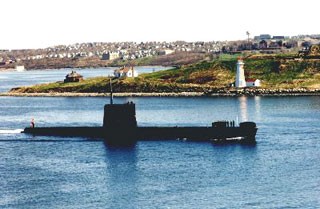 Photo: Contributed - Submariners Association of Canada Photo: Contributed - Submariners Association of Canada
The HMCS Okanagan off Georges Island Nova Scotia.
The Okanagan was built at the dockyard in Chatham, England, and launched on September 17, 1966.
She would be commissioned into the Canadian Forces on June 22, 1968, assigned the pennant number 74.
Measuring just over 295 feet long and 26.5 feet wide, the Sub carried a compliment of six officers and 62 crew.
The Okanagan survived a collision with the Royal Fleet Auxiliary vessel Grey Rover while exercising in British waters in July of 1973. Fortunately, there were no injuries to the submarine's crew.
Seven years later she participated in the filming of a Japanese disaster film called "Fukkatsu no hi,"and one of her officers was given a small speaking role.
Maritime Command (MARCOM) would decommission the Okanagan on September 14, 1998, after serving her entire career with Maritime Forces Atlantic (MARLANT) in the North Atlantic.
After the sub had been sitting idle for seven years at CFB Halifax, in May of 2005 MARCOM announced it was looking to sell the Okanagan for scrap metal, along with three other Canadian Oberons laid up in Halifax.
There were 27 Oberon class submarines built. The diesel-electric submarine was based on the successful British Porpoise-class.
Thirteen were constructed for the British Royal Navy, while another fourteen were exported to other countries.
Canada took three new with an additional two British submarines later transferred, six went to the Royal Australian Navy, three to the Brazilian Navy, and two to the Chilean Navy.
castanet | |
|   | | farewell
Général de corps d'armée (ANP)


messages : 2468
Inscrit le : 13/02/2011
Localisation : ******
Nationalité : 
Médailles de mérite :  

 |  Sujet: Re: Armée canadienne/Canadian Armed Forces Sujet: Re: Armée canadienne/Canadian Armed Forces  Mar 16 Aoû 2011 - 16:51 Mar 16 Aoû 2011 - 16:51 | |
| - Citation :
- La marine et l'armée de l'air retrouvent leur nom d'antan
http://fr.canoe.ca/infos/quebeccanada/archives/2011/08/20110815-161935.html _________________  "Les belles idées n'ont pas d'âge, elles ont seulement de l'avenir" "Les belles idées n'ont pas d'âge, elles ont seulement de l'avenir" | |
|   | | Fremo
Administrateur

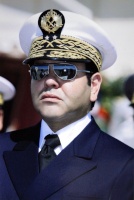
messages : 24818
Inscrit le : 14/02/2009
Localisation : 7Seas
Nationalité : 
Médailles de mérite :  
 

 |  Sujet: Re: Armée canadienne/Canadian Armed Forces Sujet: Re: Armée canadienne/Canadian Armed Forces  Mar 16 Aoû 2011 - 21:17 Mar 16 Aoû 2011 - 21:17 | |
| c'est une insulte à la Couronne ! _________________  | |
|   | | Yakuza
Administrateur

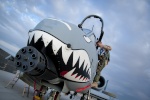
messages : 21656
Inscrit le : 15/09/2009
Localisation : 511
Nationalité : 
Médailles de mérite :  

 |  Sujet: Re: Armée canadienne/Canadian Armed Forces Sujet: Re: Armée canadienne/Canadian Armed Forces  Mer 17 Aoû 2011 - 6:39 Mer 17 Aoû 2011 - 6:39 | |
| au contraire,c´est une provocation dirigée aux francophones,qui n´ont rien a voir avec la couronne britanique.
c´est un honneur a elle,si un pays riche comme le canada se montre encore lié a un pays qui plonge dans la misere.. _________________  | |
|   | | Fremo
Administrateur


messages : 24818
Inscrit le : 14/02/2009
Localisation : 7Seas
Nationalité : 
Médailles de mérite :  
 

 |  Sujet: Re: Armée canadienne/Canadian Armed Forces Sujet: Re: Armée canadienne/Canadian Armed Forces  Mer 17 Aoû 2011 - 9:44 Mer 17 Aoû 2011 - 9:44 | |
| une marine comme celle du Canada, qui ne reflète en rien la richesse du pays, n'est pas dans la mesure d'être une Royal Navy ! _________________  | |
|   | | lida
Colonel-Major


messages : 2195
Inscrit le : 01/11/2008
Localisation : maroc
Nationalité : 
Médailles de mérite :  
 

 |  Sujet: Re: Armée canadienne/Canadian Armed Forces Sujet: Re: Armée canadienne/Canadian Armed Forces  Jeu 18 Aoû 2011 - 19:14 Jeu 18 Aoû 2011 - 19:14 | |
| - Citation :
- SOURCE:Flight Daily News
AUVSI: Canada withdraws from NATO RQ-4 program
Canada has become the second country to withdraw from the Northrop Grumman RQ-4 alliance ground surveillance (AGS) program, but the remaining NATO partners are "very close" to signing a contract, according to sources familiar with the negotiations.
The decision means AGS will lose another source of funding that must be compensated for by the 13 NATO members still committed.
In June, Canadian TV broadcaster CBC reported that Canada also is withdrawing from the NATO partnership operating the E-3 airborne warning and control system (AWACS).

© Northrop Grumman
The AGS program had lost another key partner last June. Denmark also decided to withdraw from the partnership acquiring a six-aircraft RQ-4 fleet in June 2010.
Meanwhile, Northrop and NATO officials are likely to sign a contract to launch the development phase of the AGS programme within several days. The contract award may still have to be approved by each of the national partners before it becomes official.
Previously, Northrop officials had predicted that the long-awaited contract award milestone might not be reached around October.
Northrop is offering to deliver six RQ-4 air vehicles configured with the US Air Force's Block 40 equipment, which includes a wide area surveillance sensor called the Northrop/Raytheon multi-platform radar technology insertion program. It will perform the same role as the USAF E-8C joint surveillance target attack radar system.
European partners, including EADS, will supply mobile ground control stations for the NATO RQ-4 fleet, which will be based at Sigonella AB, Sicily. | |
|   | | godzavia
Adjudant-chef

messages : 461
Inscrit le : 21/09/2010
Localisation : algérie alger
Nationalité : 
Médailles de mérite : 
 |  Sujet: Re: Armée canadienne/Canadian Armed Forces Sujet: Re: Armée canadienne/Canadian Armed Forces  Mer 31 Aoû 2011 - 9:07 Mer 31 Aoû 2011 - 9:07 | |
| _________________  | |
|   | | Fremo
Administrateur


messages : 24818
Inscrit le : 14/02/2009
Localisation : 7Seas
Nationalité : 
Médailles de mérite :  
 

 |  Sujet: Re: Armée canadienne/Canadian Armed Forces Sujet: Re: Armée canadienne/Canadian Armed Forces  Lun 5 Sep 2011 - 16:09 Lun 5 Sep 2011 - 16:09 | |
| Quelle honte pour La Couronne  - Citation :
Le Canada n’a plus de sous-marin opérationnel
Le dernier sous-marin opérationnel de la marine canadienne a été retiré du service pour entretien jusqu’en 2016. La marine canadienne n’a plus aucune capacité sous-marine, ce qui soulève la question de l’avenir de la flotte sous-marine.
Les sous-marins canadiens, qui ont déjà couté environ 900 millions $, ont connu de nombreux problèmes d’entretien, qui les ont empêché d’être opérationnels pendant de longues périodes.
En juillet dernier, un article rappelait qu’un des sous-marins, le HMCS Windsor, était arrivé au Canada à l’automne 2001 mais, depuis, n’avait pris la mer que 332 jours.
Le HMCS Corner Brook, endommagé lorsqu’il a heurté le fond de l’océan pendant un entrainement en juin dernier, est maintenant bloqué à quai. Il va être réparé et modernisé pendant une période d’entretien programmée actuellement en cours.
Mais la marine canadienne a confirmé qu’il n’était pas prévu que ce sous-marin reprenne la mer avant 2016.
Le HMCS Chicoutimi, endommagé en 2004 par un incendie qui avait tué un officier, est toujours indisponible. Il ne reste donc que le HMCS Windsor et le HMCS Victoria, qui eux aussi, ne peuvent pas prendre la mer.
« La marine canadienne fait désormais tout pour que le HMCS Victoria et le HMCS Windsor puissent reprendre la mer au début 2012, » a déclaré le Lt.-Cmdr. Brian Owens, porte-paroles de la marine. « Le Victoria effectue actuellement des essais à la mer en prévision de son retour en mer. »
Il a indiqué que le Victoria devait effectuer ce mois-ci une plongée d’essai dans le port d’Esquimalt « afin de vérifier l’étanchéité du sous-marin et les fonctionnalités d’autres systèmes importants. »
Mais un expert, Martin Shadwick, estime que les dernières nouvelles des 4 sous-marins sont un nouveau revers pour le programme.
« Tous les arguments utilisés il y a 15 ans par la marine canadienne pour justifier l’achat de sous-marins sont toujours valables, mais ils n’ont pas pu donner aux hommes politiques d’exemples concrets parce que les sous-marins ne sont pas assez disponibles, » explique Shadwick, professeur à l’Université de York. « Les sous-marins sont donc beaucoup plus vulnérables aux réductions budgétaires. »
Il souligne que la survie à l’avenir de la force sous-marine pourrait être remise en cause si les problèmes continuent.
Vancouver Sun _________________  | |
|   | | Yakuza
Administrateur


messages : 21656
Inscrit le : 15/09/2009
Localisation : 511
Nationalité : 
Médailles de mérite :  

 |  Sujet: Re: Armée canadienne/Canadian Armed Forces Sujet: Re: Armée canadienne/Canadian Armed Forces  Lun 5 Sep 2011 - 16:13 Lun 5 Sep 2011 - 16:13 | |
| comme quoi,difficile de pretendre tjs etre/rester force sous-marine,ca se merite _________________  | |
|   | | Fremo
Administrateur


messages : 24818
Inscrit le : 14/02/2009
Localisation : 7Seas
Nationalité : 
Médailles de mérite :  
 

 |  Sujet: Re: Armée canadienne/Canadian Armed Forces Sujet: Re: Armée canadienne/Canadian Armed Forces  Jeu 8 Sep 2011 - 16:43 Jeu 8 Sep 2011 - 16:43 | |
| _________________  | |
|   | | MAATAWI
Modérateur


messages : 14756
Inscrit le : 07/09/2009
Localisation : Maroc
Nationalité : 
Médailles de mérite :
 
 
 
 |  Sujet: Re: Armée canadienne/Canadian Armed Forces Sujet: Re: Armée canadienne/Canadian Armed Forces  Mar 13 Sep 2011 - 12:01 Mar 13 Sep 2011 - 12:01 | |
| - Citation :
Air force short on trained pilots
To fill personnel gap, RCAF is asking retired flyers to rejoin
The Royal Canadian Air Force is not training enough pilots to meet its demands while at the same time, it faces a wave of retirements as well as the recruiting of skilled staff by airlines.
Lt.-Gen. Andre Deschamps, the head of the Canada's air force, has told Vice Admiral Bruce Donaldson, the vice chief of the defence staff, that he cannot produce the 125 new pilots he needs each year, according to documents obtained by Postmedia News.
To fill part of the gap, the RCAF is asking its retired pilots to rejoin the service. So far this year, a dozen retirees have re-enlisted.
Deschamps told Donaldson he expects to reach his target of 125 pilot graduates in the next fiscal year, ending in the spring of 2013.
But defence insiders are questioning whether that will happen and point out that the problem with producing enough trained pilots has been going on for years.
"The air force acknowledges the need for more trained pilots and is working hard to invest in the appropriate resources to meet its personnel requirements," spokeswoman Maj. Sonia Dumouchel Connock stated in an email.
She noted the RCAF intends to increase pilot production to meet present and future requirements for positions across the Canadian Forces. At the same time, the air force is trying to entice retirees to return to the service.
Dumouchel Connock pointed out that there have been significant enhancements to the Canadian Forces pay and benefits package over the past few years.
She added that some former service members miss the excitement and opportunities of military life.
"The principal challenge with personnel attrition is the fact that the air force is losing its cohort of baby boomers who are reaching the end of their career," she explained.
"It is a regular occurrence for civilian industry to recruit members of the Canadian Forces who are extremely well-trained and have received a wide variety of experiences to support their business ventures."
Air Canada has recently embarked on a hiring spree to replenish the ranks of its pilots.
The airline estimates that between 2009 and 2013, about 20 per cent of its 3,000 pilots will have retired.
So far this year it has hired 48 new pilots.
But defence insiders point out that the main problem lies with the RCAF's training system.
Young pilots have to wait lengthy periods before they can get training time on aircraft and some become discouraged, eventually leaving the military.
Dumouchel Connock said the organization is looking to improve its training by tailoring instruction to operational needs and increasing the use of simulators.
In addition, in the coming months the RCAF will alter its pilot selection methods to identify those candidates most likely to succeed in training.
"In other words, a better baseline candidate is more likely to pass pilot training and is more likely to be a better pilot in the end," noted Dumouchel Connock. "This will allow us to better select the right people for the organization."
© Copyright (c) The Vancouver Sun
Read more: http://www.vancouversun.com/news/force+short+trained+pilots/5387272/story.html#ixzz1XpEbbzBq | |
|   | | Yakuza
Administrateur


messages : 21656
Inscrit le : 15/09/2009
Localisation : 511
Nationalité : 
Médailles de mérite :  

 | |   | | Invité
Invité
 |  Sujet: Kuwait's PM arrives Sunday for state visit Sujet: Kuwait's PM arrives Sunday for state visit  Jeu 22 Sep 2011 - 20:44 Jeu 22 Sep 2011 - 20:44 | |
| - Citation :
- Kuwait's PM arrives Sunday for state visit
Kuwait's Prime Minister Sheikh Nasser Al-Mohammed Al-Ahmad Al-Jaber Al-Sabah and his Foreign Affairs Minister Sheikh Mohammad Sabah Al-Salem Al-Sabah will arrive in Ottawa this Sunday for an official state visit with Prime Minister Stephen Harper on Monday, CBC News has learned.
The visit follows the signing of a Canada-Kuwait memorandum of understanding last July giving the Canadian Forces a staging base for logistical support to Canadian operations in Afghanistan.
"Kuwait is an influential partner in the region and we are very pleased that this agreement has been reached for the benefit of our respective countries,” Defence Minister Peter MacKay said in July.
Canada was forced to leave Camp Mirage, its base in the United Arab Emirates, after a dispute over landing rights for the UAE’s commercial airlines in Canada.
In July, MacKay said the agreement with Kuwait would save Canada $25 million a year, but didn't say how much the new deal would actually cost.
The cost of moving the base from the UAE has been pegged at anywhere from $90 million to $300 million.
CBC News |
|   | | MAATAWI
Modérateur


messages : 14756
Inscrit le : 07/09/2009
Localisation : Maroc
Nationalité : 
Médailles de mérite :
 
 
 
 |  Sujet: Re: Armée canadienne/Canadian Armed Forces Sujet: Re: Armée canadienne/Canadian Armed Forces  Mar 27 Sep 2011 - 18:10 Mar 27 Sep 2011 - 18:10 | |
| Canada - Exercise Tireur Accompli - Spoiler:
| |
|   | | MAATAWI
Modérateur


messages : 14756
Inscrit le : 07/09/2009
Localisation : Maroc
Nationalité : 
Médailles de mérite :
 
 
 
 |  Sujet: Re: Armée canadienne/Canadian Armed Forces Sujet: Re: Armée canadienne/Canadian Armed Forces  Mer 5 Oct 2011 - 11:16 Mer 5 Oct 2011 - 11:16 | |
| Canada - Exercise Franchissement Audacieux - Spoiler:
The purpose of this exercise was to cross the St. Lawrence River aboard thirty assault inflatable boats to attack a fictional enemy located at the eastern tip of Île-aux-Coudres. The simulation of fighting resulted in different scenarios ranging from ambushes to confrontation, punctuated by explosions.  The 35th Combat Engineer Regiment cross the St. Lawrence River during Exercise Franchissement Audacieux. Nine hundred reservists from the 35th Canadian Brigade Group (35 CBG) take part in Exercise Franchissement Audacieux on October 1, 2011 in Les Éboulements and Île-aux-Coudres municipalities, in the region of Charlevoix, QC.  The 35th Combat Engineer Regiment cross the St. Lawrence River during Exercise Franchissement Audacieux. Nine hundred reservists from the 35th Canadian Brigade Group (35 CBG) take part in Exercise Franchissement Audacieux on October 1, 2011 in Les Éboulements and Île-aux-Coudres municipalities, in the region of Charlevoix, QC.  The 35th Combat Engineer Regiment cross the St. Lawrence River during Exercise Franchissement Audacieux. Nine hundred reservists from the 35th Canadian Brigade Group (35 CBG) take part in Exercise Franchissement Audacieux on October 1, 2011 in Les Éboulements and Île-aux-Coudres municipalities, in the region of Charlevoix, QC.  The 35th Combat Engineer Regiment cross the St. Lawrence River during Exercise Franchissement Audacieux. Nine hundred reservists from the 35th Canadian Brigade Group (35 CBG) take part in Exercise Franchissement Audacieux on October 1, 2011 in Les Éboulements and Île-aux-Coudres municipalities, in the region of Charlevoix, QC.  Sapper Michael Auclair, a member of the 35th Combat Engineer Regiment starts an outboard motor while training with nine hundred other reservists from the 35th Canadian Brigade Group (35 CBG) on October 1, 2011 during Exercise Franchissement Audacieux  Two members of the 35th Combat Engineer Regiment move an outboard motor before deflating an assault boat on the shore of the island. Nine hundred reservists from the 35th Canadian Brigade Group (35 CBG) take part in Exercise Franchissement Audacieux  Members from the 35th Combat Engineer Regiment carry a boat down the shore after landing on the beach. Nine hundred reservists from the 35th Canadian Brigade Group (35 CBG) take part in Exercise Franchissement Audacieux on October 1, 2011  Members from the 35th Combat Engineer Regiment carry a boat down the shore after landing on the beach. Nine hundred reservists from the 35th Canadian Brigade Group (35 CBG) take part in Exercise Franchissement Audacieux on October 1, 2011  Sergeant Devin Batchelor, a member of The Black Watch Regiment in Montreal, observes his surroundings after his infantry troop lands on the beach by boat. Nine hundred reservists from the 35th Canadian Brigade Group (35 CBG) take part in Exercise Franchissement Audacieux on October 1, 2011  Nine hundred reservists from the 35th Canadian Brigade Group (35 CBG) take part in Exercise Franchissement Audacieux on October 1, 2011  Corporal Vincent Busset, a medical assistant with 55th Field Ambulance follows his fellow infantrymen while training with nine hundred other reservists from the 35th Canadian Brigade Group (35 CBG) on 1 October 1, 2011 during Exercise Franchissement Audacieux  Corporal Maxime Leblanc prepares to join his colleagues while training with nine hundred reservists from the 35th Canadian Brigade Group (35 CBG) in Exercise Franchissement Audacieux on October 1, 2011  Corporal Villeneuve supports his colleagues while training with nine hundred other reservists from the 35th Canadian Brigade Group (35 CBG) on October 1, 2011 during Exercise Franchissement Audacieux  Nine hundred reservists from the 35th Canadian Brigade Group (35 CBG) take part in Exercise Franchissement Audacieux on October 1, 2011
| |
|   | | MAATAWI
Modérateur


messages : 14756
Inscrit le : 07/09/2009
Localisation : Maroc
Nationalité : 
Médailles de mérite :
 
 
 
 |  Sujet: Re: Armée canadienne/Canadian Armed Forces Sujet: Re: Armée canadienne/Canadian Armed Forces  Mar 11 Oct 2011 - 13:08 Mar 11 Oct 2011 - 13:08 | |
| - Citation :
Canadian frigates get degaussing systems
MONTREAL, Oct. 10 (UPI) -- The Canadian navy's 12 Kingston class maritime coastal defense vessels are receiving degaussing systems from L-3 MAPPS.
The systems will be delivered and supported in collaboration with SAM Electronics, an L-3 company, which produces one of the most effective means of ship protection against modern sea mines.
The SAM Electronics solution reduces the magnetic signature of ships to safe levels, mitigating the threat from sea mines. It has been delivered to 15 of the world's leading navies.
"We are pleased to expand the scope of our product and service offerings in Canada to include electrical systems from L-3's SAM Electronics business," said Rangesh Kasturi, vice president of marketing and sales for L-3 MAPPS Marine Systems and Simulation.
"As an industry leader, we are able to leverage our proven capabilities and the global footprint of L-3's Marine and Power Systems group of companies to meet the increasing requirements of the Canadian navy and the Canadian coast guard."
L-3 MAPPS has provided marine control systems, trainers and training services to the Canadian navy's ships and submarines for more than 25 years and is implementing the Halifax-Class Frigates Integrated Platform Management System upgrade contract. upi.com | |
|   | | godzavia
Adjudant-chef

messages : 461
Inscrit le : 21/09/2010
Localisation : algérie alger
Nationalité : 
Médailles de mérite : 
 |  Sujet: Re: Armée canadienne/Canadian Armed Forces Sujet: Re: Armée canadienne/Canadian Armed Forces  Mer 12 Oct 2011 - 8:59 Mer 12 Oct 2011 - 8:59 | |
| _________________  | |
|   | | Fremo
Administrateur


messages : 24818
Inscrit le : 14/02/2009
Localisation : 7Seas
Nationalité : 
Médailles de mérite :  
 

 |  Sujet: Re: Armée canadienne/Canadian Armed Forces Sujet: Re: Armée canadienne/Canadian Armed Forces  Sam 15 Oct 2011 - 11:26 Sam 15 Oct 2011 - 11:26 | |
| HMCS Preserver ( 510 ) au port de Halifax en ce début d'Octobre. c'est lun des 2 PR de la classe Protecteur de la RCN, elle affiche plus de 40 ans de servicce actif. La RCN compte les remplacer vers 2016/2017, dans le cadre de son projet JSS. 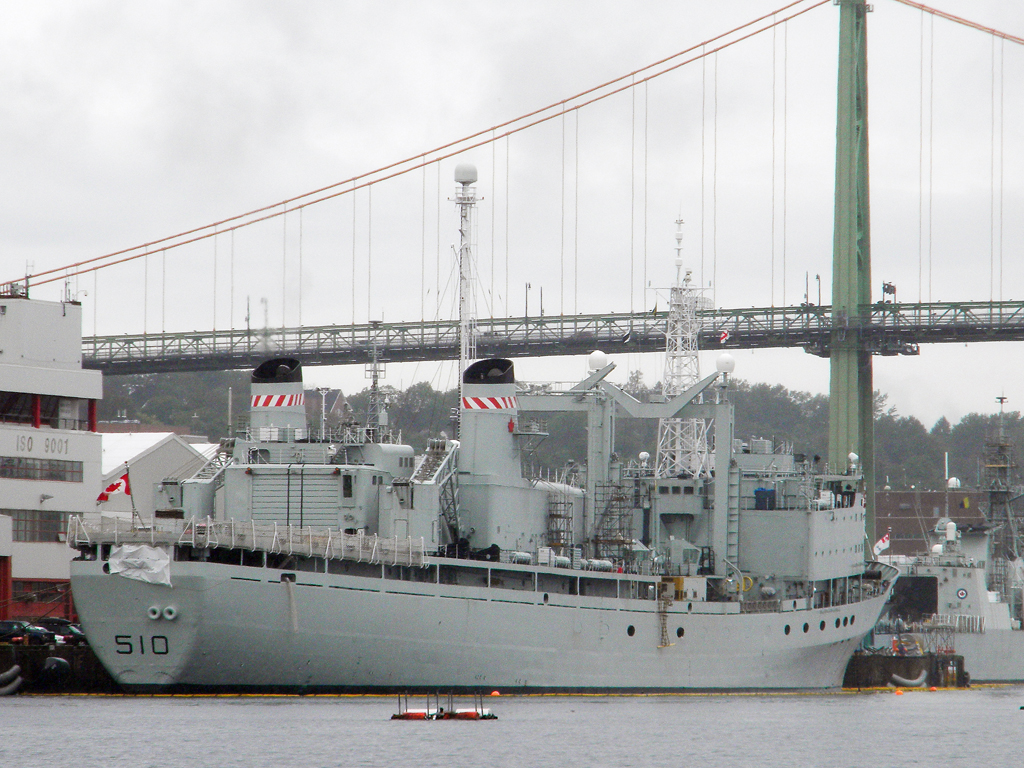 _________________  | |
|   | | MAATAWI
Modérateur


messages : 14756
Inscrit le : 07/09/2009
Localisation : Maroc
Nationalité : 
Médailles de mérite :
 
 
 
 |  Sujet: Re: Armée canadienne/Canadian Armed Forces Sujet: Re: Armée canadienne/Canadian Armed Forces  Mer 19 Oct 2011 - 11:32 Mer 19 Oct 2011 - 11:32 | |
| - Citation :
U.S. Air Force to train Canadian F-35 pilots?
OTTAWA — Canadian fighter pilots selected to fly the new F-35 could find themselves trained by either the Americans or a private contractor, according to internal air force documents.
The staggering multibillion-dollar purchase price means the Conservative government can only afford 65 of the multi-role stealth fighters.
The number -- Canada currently has 79 aging CF-18s -- stretches the ability of the air force to meet its commitments, says a series of briefings given to the air force chief last year.
Internal air force memos from the fall of 2010 lay out the "potential for NO pilot training in Canada."
A separate briefing in April 2010 says the F-35 fleet size is "constrained" by cost and other factors.
The presentations, obtained by The Canadian Press under access to information, rank U.S. Air Force training or a contracted "fee-for-service" approach higher than doing it in Canada.
Defence Minister Peter MacKay has said 65 fighters are more than enough to meet Canada's needs, but the briefing raises questions about that because the air force must keep 36 fighters on standby for North American air defence and another dozen for training.
The spring 2010 assessment, written before the government announced its intention to purchase the jets, suggested the air force "optimize operational capability by not employing (a) portion of the fleet for training."
The presentations rank training with either the U.S. Air Force -- or a contracted "fee-for-service" approach -- as better than doing it in Canada.
Getting instruction from the Americans would provide a "rich" level of experience, but still require the commitment of Canadian F-35s. Allowing an outside agency to do the training would allow the air force to "maximize" the number of aircraft in its fleet.
Under the proposal, pilots would continue to receive their initial qualification in the country, but go elsewhere for advanced training.
The spring 2010 briefing suggested initial overtures to the F-35 Program Executive Officer, the U.S. military officer in charge of the program at the Pentagon, were "positive."
A spokesman for National Defence said Monday that no decision has been made.
"The Royal Canadian Air Force (RCAF) is currently reviewing available options and will choose the option that best meets the needs of Canada's future fighter pilot training," said Evan Koronewski in an email response.
"Canada may exercise the option to participate in a JSF Program Office managed international Pilot Training Centre (PTC). Any decision on how and where this training is conducted will be made with full consideration for specific Canadian training requirements."
Last year, MacKay and his former Parliamentary secretary Laurie Hawn announced the 65 F-35s would be split with 24 planes each at 3 Wing at Bagotville, Que. and 4 Wing in Cold Lake.
There would be training squadron, they insisted, "at a location to be announced in the future."
The plan raises questions about the future of the air force's tactical operational fighter squadron, headquartered at Canadian Forces Base Cold Lake, Alta. The trainers at 410 Squadron run one fighter pilot course every year, graduating about 20 pilots.
The training program consists of nine months of ground school, including flight simulator flights, as well as operational flying. The flight school has been doing advanced training for the air force since the 1960s.
"Until such time as a training solution is decided upon, it is not yet possible to assess the impact, if any, on the OTU (Operational Training Unit) at 4 Wing," Koronewski said.
The U.S. has expressed doubts about whether Canada would buy enough stealth jets in a WikiLeaks cable, dated Dec. 7, 2004.
The classified diplomatic cable noted that even with the current NORAD allotment, Canada is hard-pressed to defend its own cities on a 24 hour, seven-day-a-week basis in times of crisis.
"If cued and pre-positioned at a high-state of readiness, the Canadian air force could cover Vancouver, Edmonton-Calgary, Ottawa-Montreal, and Toronto," said the leaked document. "This would leave almost no capability to provide alert aircraft for Winnipeg, Halifax -- or Quebec City."
It is unclear whether the cost of farming out F-35 flight training is factored into the estimated $9-billion-to-$14 billion purchase price -- or the anticipated $7 billion-to-$15 billion sustainment costs.
The briefing also highlights some of the technical challenges facing the aircraft, including the need to install drag chutes for short runway landings and to develop an air-to-air refuelling probe. Both were considered minor modifications. ctv | |
|   | | Fremo
Administrateur


messages : 24818
Inscrit le : 14/02/2009
Localisation : 7Seas
Nationalité : 
Médailles de mérite :  
 

 |  Sujet: Re: Armée canadienne/Canadian Armed Forces Sujet: Re: Armée canadienne/Canadian Armed Forces  Mer 19 Oct 2011 - 12:47 Mer 19 Oct 2011 - 12:47 | |
| HMCS Preserver ( 510 ) quittant Halifax hier.  _________________  | |
|   | | MAATAWI
Modérateur


messages : 14756
Inscrit le : 07/09/2009
Localisation : Maroc
Nationalité : 
Médailles de mérite :
 
 
 
 |  Sujet: Re: Armée canadienne/Canadian Armed Forces Sujet: Re: Armée canadienne/Canadian Armed Forces  Mer 19 Oct 2011 - 14:22 Mer 19 Oct 2011 - 14:22 | |
| Lockheed CP-140 Aurora- Spoiler:
| |
|   | | Fremo
Administrateur


messages : 24818
Inscrit le : 14/02/2009
Localisation : 7Seas
Nationalité : 
Médailles de mérite :  
 

 |  Sujet: Re: Armée canadienne/Canadian Armed Forces Sujet: Re: Armée canadienne/Canadian Armed Forces  Ven 21 Oct 2011 - 3:50 Ven 21 Oct 2011 - 3:50 | |
| - Citation :
Deux chantiers retenus pour renouveler la marine canadienne
21/10/2011
Deux énormes marchés, l'un de 25 milliards de dollars canadiens (17.8 milliards d'euros) et l'autre de 8 milliards de dollars (5.7 milliards d'euros), ont été attribués par le gouvernement d'Ottawa à deux chantiers dans le cadre du programme de renouvellement de la flotte canadienne. Halifax Shipyards, filiale du groupe Irwing, empoche le plus gros morceau, qui verra la construction d'une vingtaine de bâtiments de combat. Quant à Vancouver Shipyards (groupe Seaspan), il décroche le marché de 8 milliards de dollars portant sur la réalisation de 8 nouvelles unités pour la garde-côtière. Le grand perdant de cette distribution est le chantier québécois Davie, qui comptait sur cette manne colossale pour se relancer après une période de grande difficulté. Toutefois, Davie peut encore espérer décrocher un troisième contrat, non encore attribué et certes de moindre, mais portant quand même sur 116 petits navires pour un montant de 2 milliards de dollars.
Ce plan naval de grande ampleur découle de la nouvelle stratégie de défense nationale, dévoilée le 3 juin dernier et baptisée « Le Canada d'abord ». Concernant les unités de combat, le gouvernement prévoit l'acquisition de 15 navires pour remplacer les 3 destroyers lance-missiles du type Iroquois et les 12 frégates du type City. Les 15 nouveaux navires, prévus pour entrer en flotte à partir de 2015, auront la même coque et constitueront le programme Canadian Surface Combatant (CSC). Ils seront, en revanche, dotés de systèmes d'armes et de senseurs adaptés aux missions. Certains seront, en effet, plutôt à vocation antiaériennes alors que les autres devront offrir des capacités de lutte anti-sous-marine. Les nouveaux bâtiments pourraient être de conception canadienne ou être étudiés en coopération avec un industriel étranger et construits en transfert de technologie. La marine canadienne doit, également, renouveler ses deux pétroliers ravitailleurs. Un premier projet, portant sur trois bâtiments logistiques et de projection, a finalement été abandonné. Mais le programme Joint Support Ships (JSS) sera relancé, l'acquisition de cette nouvelle capacité étant considérée comme essentielle au déploiement lointain d'une force navale.
Concernant la Garde-côtière, le gros des moyens canadiens sera également renouvelé. Seront notamment construits 7 Arctic Offshore Patrol Ship (AOPS), destinés à permettre à Ottawa de faire valoir sa souveraineté sur les territoires maritimes du grand nord. Ces unités pourraient être dérivées du KV Svalbard, construit par STX Europe pour les garde-côtes norvégiens. Un autre programme majeur porte sur la construction d'un nouveau navire destiné à remplacer le plus puissant brise-glace lourd de la GCC, le Louis S. St-Laurent. Baptisé John G. Diefenbaker, le futur bâtiment, long d'environ 140 mètres et pouvant briser des glaces de 2.5 mètres d'épaisseur, doit être opérationnel en 2017.
Par ailleurs, dans le domaine aéronautique, on notera que la stratégie de défense canadienne prévoit de commander 10 à 12 aéronefs de patrouille maritime pour succéder aux Aurora (dérivés des P-3 C Orion américains), livrés en 1980 et 1981. De plus, 17 nouveaux avions de recherche et de sauvetage sont prévus pour remplacer les actuels Buffalo et Hercules.
M&M _________________  | |
|   | | Contenu sponsorisé
 |  Sujet: Re: Armée canadienne/Canadian Armed Forces Sujet: Re: Armée canadienne/Canadian Armed Forces  | |
| |
|   | | | | Armée canadienne/Canadian Armed Forces |  |
|
Sujets similaires |  |
|
| | Permission de ce forum: | Vous ne pouvez pas répondre aux sujets dans ce forum
| |
| |
| |
|

